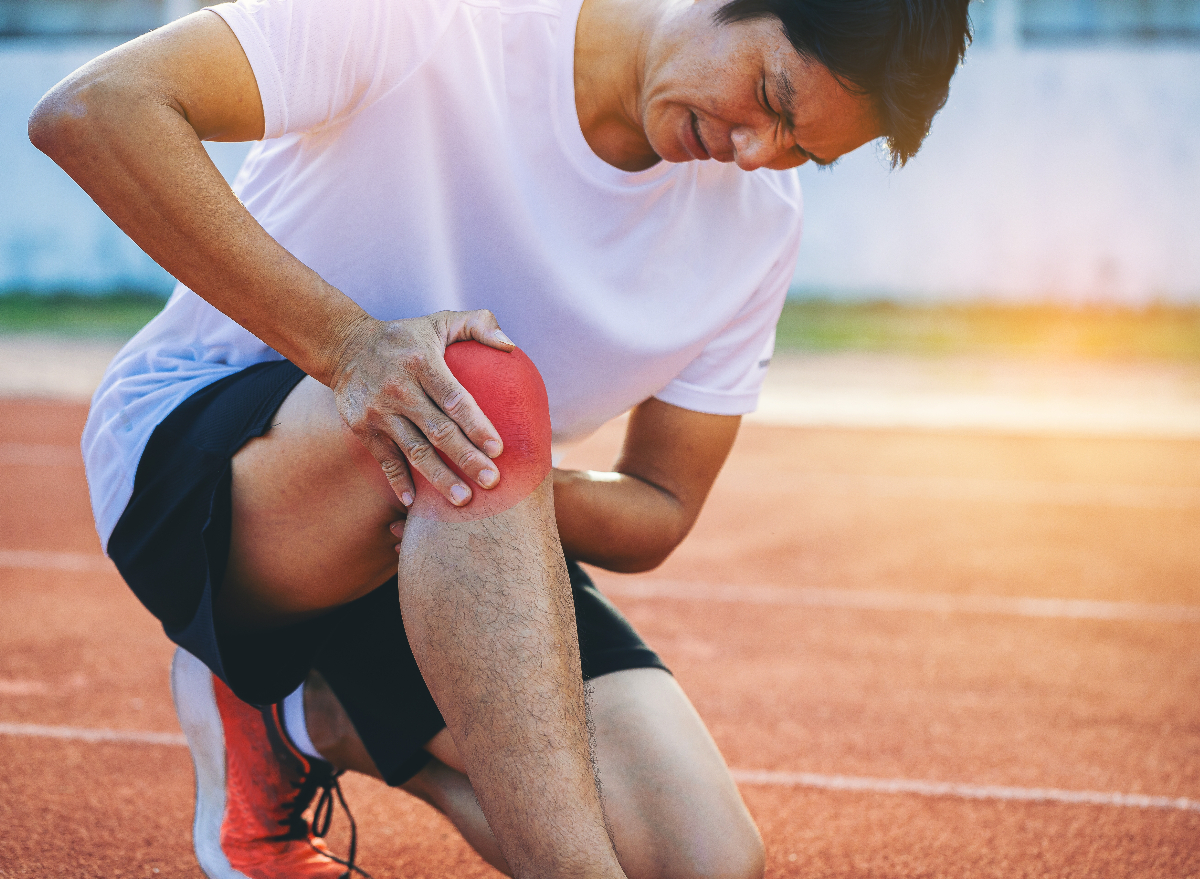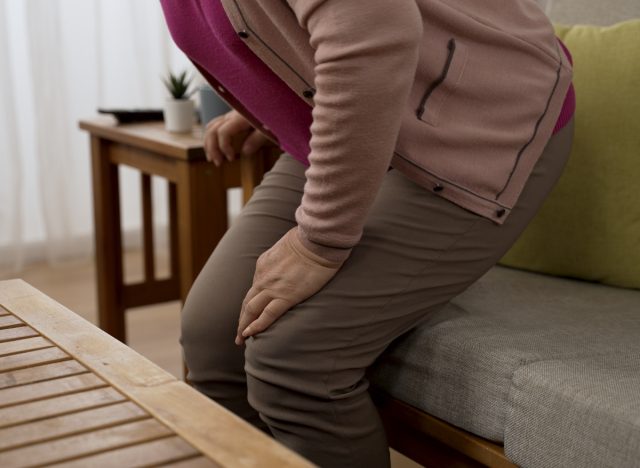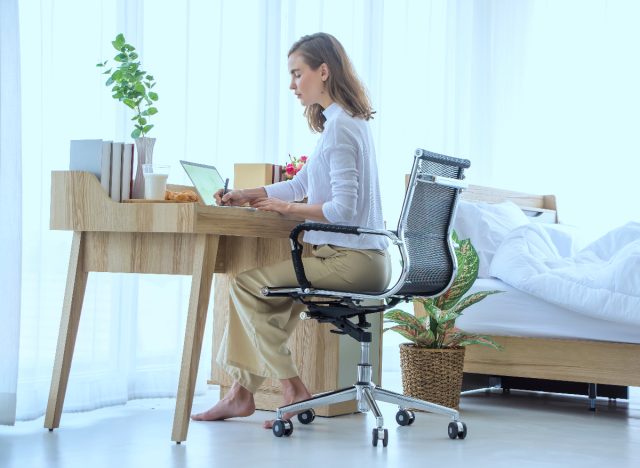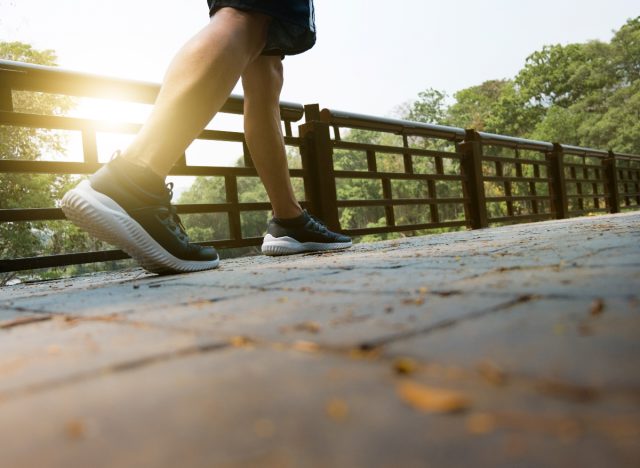5 Daily Habits That Are Destroying Your Knees

Unless you’re suffering from a knee injury or ongoing knee pain, there’s a good chance you don’t spend too much time thinking about your knees. But the habits and routines you practice both in and outside of the gym can have a massive impact on your overall knee health. A variety of muscles in the human body—especially your glutes and quads—play a crucial part in the protection of your knees, says Stacey Jernigan, master trainer for Club Pilates. “When these muscles are not strong enough, and equally strong in a balanced way, the knees tend to overcompensate,” Jernigan explains. Even getting up from being seated, going for a walk on uneven ground, sitting too much, and going up and down stairs can cause wear and tear on your knees. So we’re here today to call out some of the not-so-good habits that can destroy your knees.
“At Club Pilates, we design our classes with these very principles in mind,” Jernigan says. “We aim to build strength, especially in the stabilizer muscles that support important joints such as the knees. We aim to improve flexibility, to keep joints such as the knees from being too stiff. We also aim to create balance in the body, so that stronger muscles don’t compensate for weaker ones, a pattern which will continue and most likely cause dysfunction in the body, especially in joints such as the knees.”
If you want to keep your knees in good health, Jernigan suggests you go barefoot for at least one hour a day or consider wearing toe socks that keep your toes separated. By doing either, the muscles in your ankles, arches, and toes have a better chance of working properly and in a well-balanced manner, which will alleviate stress from your knee joints. In addition, standing up and doing some calf stretches and calf raises regularly is a smart idea.
“We only have one set of knees, and we need to work daily to protect them,” Jernigan points out. “No one wants a knee replacement!” Keep reading to learn about some of the bad daily habits that can destroy your knees so you can live a pain-free life. And when you’re finished, don’t miss out on the 5 Fitness Habits That Are Destroying Your Body After 40.
Hyperextending

Hyperextending is a total no-go. This means “locking out” your knee joint. To avoid hyperextension altogether, whenever you stand up or perform exercises that require you to straighten out your legs, be sure to activate your lower quads, which are right above your kneecaps.
“Think of slightly lifting the kneecaps up toward the hips,” Jernigan says. “If you have a tendency to lock your knees out, and you’re standing often throughout the day, consider keeping the knees soft to help protect the knee joints.”
Not utilizing your glutes

When you stand up from a seated position, you likely do it naturally without thinking. Engaging your glutes in that process is probably not at the top of your mind. But not using your glutes when standing up can put excess stress on your knee joints. “Try to think about pressing through your heels as you stand, to help activate glute muscles, thus taking pressure off the knees,” suggests Jernigan.
Sitting for long periods of time

If you’ve ever heard the phrase “sitting is the new smoking,” then you already know that an overly sedentary lifestyle (or not getting up to move and stretch at your desk job) can be detrimental to your overall health. So it should come as no surprise that your knees can suffer from sitting too long as well.
“The knee joints and surrounding tissue will stiffen during continuous sitting,” Jernigan explains. “Plan to set an alarm on your watch or phone every one and a half to two hours to remind you to stand and walk around, even just for two to three minutes, to help keep the tissue soft and hydrated with proper circulation and blood flow.”
Improper knee-to-hip alignment

If you want to protect your knees, start being mindful of your knee-to-hip alignment, pronto. “Even sitting in a chair that is not the proper height can result in you sitting at an angle that puts pressure on the knee joint,” says Jernigan. “Be sure to keep your knees at hip height, or slightly lower than hip height.”
Wearing footwear with poor support

Not wearing the best shoes for your feet can truly wreak havoc on your body. Walking or even standing with your knees, ankles, and feet not properly aligned can make your body compensate and place more stress on your bones and joints—especially your knees.
“Having your feet in a low heel, with plenty of room to spread out the toes, will help ensure proper knee-to-ankle alignment, helping to avoid too much pressure on the ankle joint,” Jernigan explains.









